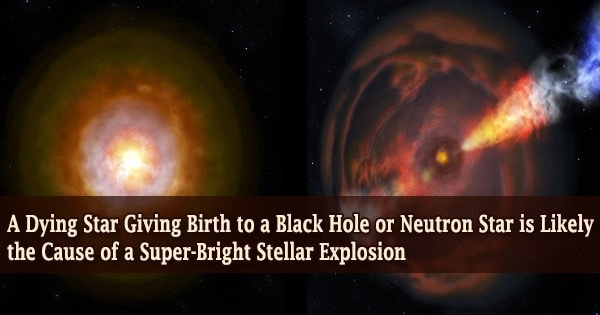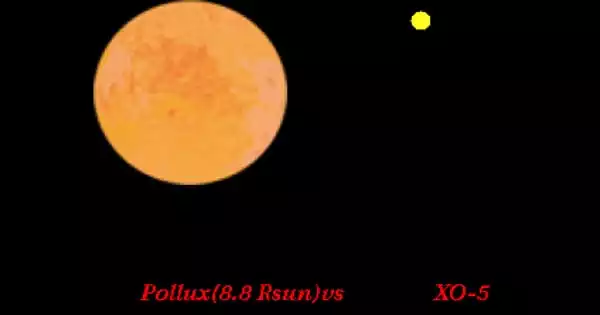A brilliant blue flash from the spiral arm of a galaxy 200 million light-years away was detected by telescopes all over the world in June of 2018. The strong blast appeared to be a supernova at first glance, but it was considerably faster and brighter than any star explosion scientists had previously witnessed.
The signal, codenamed AT2018cow, has now been called “the Cow,” and it has been classified as a fast blue optical transient, or FBOT, a brilliant, short-lived phenomenon of unknown origin by astronomers.
Now, a team led by MIT has discovered compelling evidence for the signal’s origin. A strobe-like pulse of high-energy X-rays was discovered in addition to a dazzling visual flash. They tracked hundreds of millions of such X-ray pulses back to the Cow and discovered that they happened at the same time every 4.4 milliseconds for 60 days.
The scientists concluded that the X-rays must have come from an object measuring little more than 1,000 kilometers across and weighing no more than 800 suns based on the frequency of the pulses. Such an item, like a tiny black hole or a neutron star, would be compact by astronomical standards.
Their findings, which were published in the journal Nature Astronomy today, strongly suggest that AT2018cow was the result of a dying star collapsing into a compact object like a black hole or neutron star. The infant object continued to consume surrounding matter, eventually devouring the star from within, releasing a massive blast of energy.
“We have likely discovered the birth of a compact object in a supernova,” says lead author Dheeraj “DJ” Pasham, a research scientist in MIT’s Kavli Institute for Astrophysics and Space Research. “This happens in normal supernovae, but we haven’t seen it before because it’s such a messy process. We think this new evidence opens possibilities for finding baby black holes or baby neutron stars.”
It was exciting because loads of data started piling up. The amount of energy was orders of magnitude more than the typical core-collapse supernova. And the question was, what could produce this additional source of energy?
Dheeraj “DJ” Pasham
“The core of the Cow”
AT2018cow is one of a slew of “astronomical transients” found in 2018. The word “cow” appears in its name due to a coincidental astronomical naming process (for instance, “aaa” refers to the very first astronomical transient discovered in 2018).
The signal is one of only a few dozen known FBOTs and one of only a few that has been observed in real-time. A survey in Hawaii caught its strong flare, which was up to 100 times brighter than a usual supernova, and instantly sent out notifications to observatories all across the world.
“It was exciting because loads of data started piling up,” Pasham says. “The amount of energy was orders of magnitude more than the typical core-collapse supernova. And the question was, what could produce this additional source of energy?”
Various theories have been advanced by astronomers to explain the super-bright signal. It could have been the result of a black hole forming in a supernova, for example. It might also have happened as a result of a passing star being stripped of its material by a middle-weight black hole.
Optical telescope data, on the other hand, hasn’t been able to pinpoint the source of the signal in any way. Pasham wondered if X-ray data may provide a solution.
“This signal was close and also bright in X-rays, which is what got my attention,” Pasham says. “To me, the first thing that comes to mind is, some really energetic phenomenon is going on to generate X-rays. So, I wanted to test out the idea that there is a black hole or compact object at the core of the Cow.”
Finding a pulse
NASA’s Neutron Star Interior Composition Explorer (NICER), an X-ray-monitoring telescope atop the International Space Station, provided the researchers with X-ray data. NICER began watching the Cow about five days after it was first seen by optical telescopes and continued for the next 60 days. This information was saved in a publicly accessible archive, which Pasham and his colleagues accessed and evaluated.
The scientists examined the data for X-ray signals coming from around AT2018cow and confirmed that the emissions were not caused by instrument noise or cosmic background phenomena. They concentrated on the X-rays and discovered that the Cow was emitting bursts at a frequency of 225 hertz, or once every 4.4 milliseconds.
Pasham was drawn to this pulse because he realized that its frequency could be used to immediately calculate the magnitude of whatever was pulsing. The size of the pulsing item in this example must not exceed the distance that light can reach in 4.4 milliseconds. He concluded that the object’s dimensions must be no more than 1.3×108 cm, or around 1,000 kilometers broad, using this logic.
“The only thing that can be that small is a compact object either a neutron star or black hole,” Pasham says.
Based on the energy emitted by AT2018cow, the team concluded that it must be no larger than 800 solar masses.
“This rules out the idea that the signal is from an intermediate black hole,” Pasham says.
Apart from identifying the source of this signal, Pasham claims that the research shows that X-ray examinations of FBOTs and other ultrabright occurrences could be a new tool for investigating infant black holes.
“Whenever there’s a new phenomenon, there’s excitement that it could tell something new about the universe,” Pasham says. “For FBOTs, we have shown we can study their pulsations in detail, in a way that’s not possible in the optical. So, this is a new way to understand these newborn compact objects.”
















